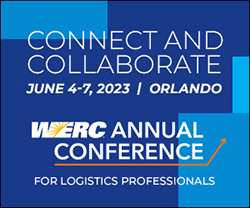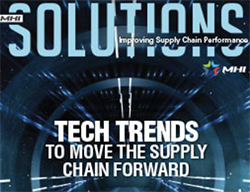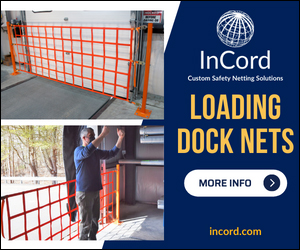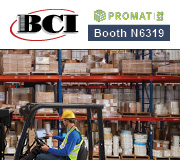Facing an unprecedented level of disruption, the warehousing, distribution center and fulfillment space is changing fast. From labor and data challenges to the explosive growth of e-commerce, no topic is off the table at the 2023 WERC Annual Conference.
Attending puts you in the same room with front-line innovators, thought leaders and industry peers who have found new ways to thrive amid this disruption.
|
A new report released by MHI and Deloitte finds that 74% of supply chain leaders are increasing their supply chain technology and innovation investments, with 90% saying they are planning to spend over $1 million, an increase of 24% over last year. Thirty-six percent plan to spend over $10 million, up 19%.
|
One important lesson learned from the pandemic was the need to address the fragility of global supply chains. To mitigate the risk of future disruption, it’s become clear that firms need to automate and invest in technology to keep up. The new issue of MHI Solutions highlights the top trends and technologies driving this necessary supply chain resiliency focus. These solutions not only include automation and robotics but also tools that enable more powerful uses of data such as artificial intelligence and machine learning.
|
The manufacturing and supply chain community came together in a big way after four years for a record-setting ProMat event, according to show producer MHI. With an overall registration count of 50,924 and 1,051 exhibitors, the event featured 562,700 net square feet of exhibit solutions and over 150 educational sessions encompassing 1.2 million square feet at Chicago’s McCormick Place.
|
Historically, forecasting, allocation and replenishment planning have all been manual, time-consuming, error prone and reactive—instead of proactive. But with the increasing availability of affordable cloud-based computing power, data aggregators and advanced artificial intelligence (AI) algorithms and machine learning (ML) technologies, the world of demand planning has experienced a seismic shift.
Industry consultants, solution providers, researchers and academics have been touting the importance of customer-centricity. With supply chain, that means keeping the customer at the center throughout manufacturing, transportation, storage and distribution. But in times that continue to rapidly shift, what does that look like?
As an independent engineering logistics consulting firm, MHI member St. Onge is different from many companies in the material handling industry. We don’t produce specific products like conveyors, lift trucks, pallet racking or software. Instead, our people—their capabilities and skills—are our product. Our people truly are our company.
It’s an increasingly common refrain: 83% of supply chain practitioners surveyed by Gartner say they’re being asked to improve customer experience as part of their organization’s digital business strategy. The most common priority is developing a customer-centric culture.
|
When it comes to the final 100 feet of your operations, automation can be the name of the game to increase efficiencies. Using tools for scanning, labeling, applying and manifesting (SLAM) can help ensure your packages get to the right place, at the right time. One crucial piece of SLAM equipment is the dimensioner. The job of this equipment is to accurately determine the size of the packaging needed, creating manifests on the fly.
It is important to train employees on how to correctly use and work with warehouse equipment, including the basics of rack safety. Any employee who interfaces with a rack system as part of their job needs training on what is and isn’t a safe interaction with rack.
|
















.png)